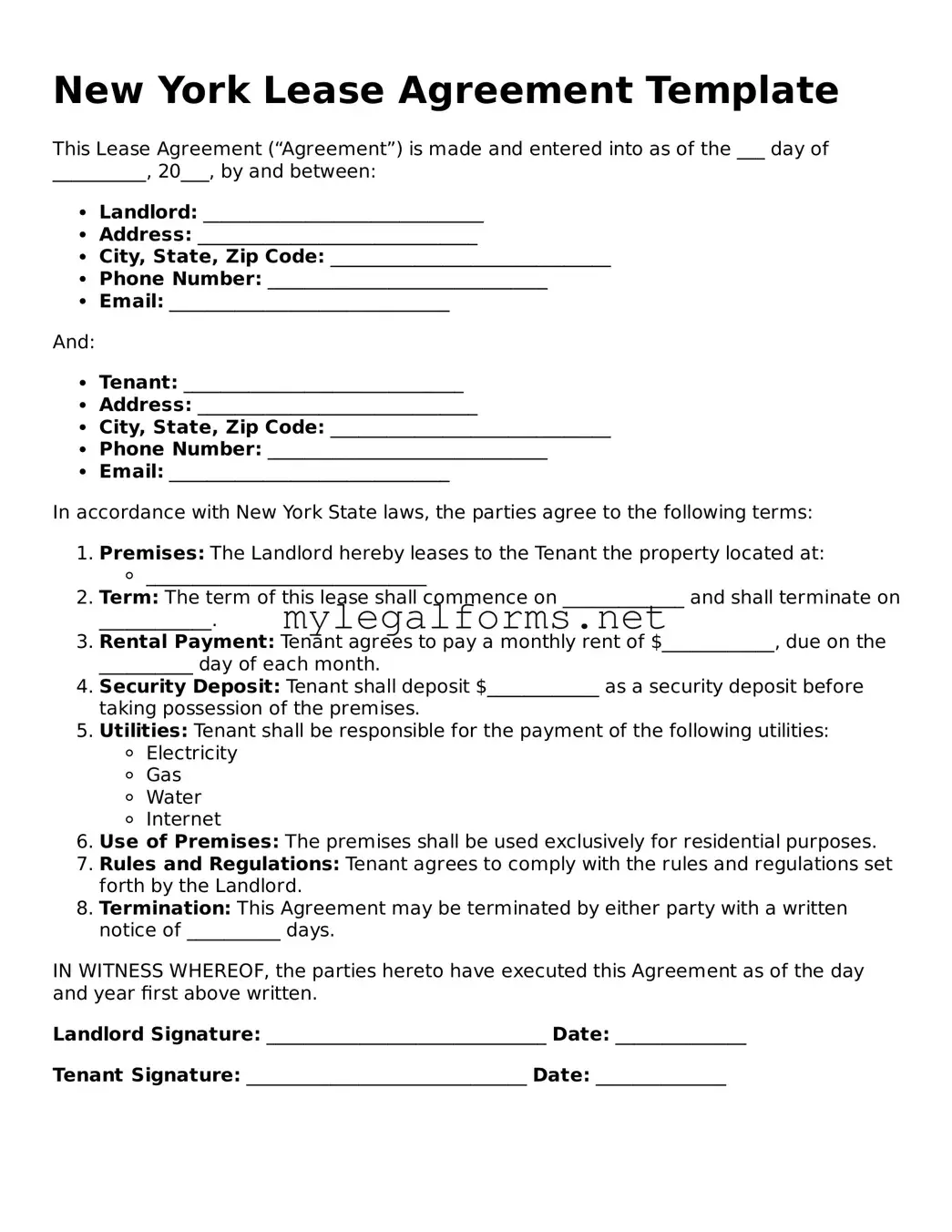Filling out the New York Lease Agreement form can be a straightforward process, but many individuals make common mistakes that can lead to complications later. One frequent error is failing to include all required tenant information. Each tenant’s full name, contact information, and social security number should be clearly listed. Omitting any of this information can create confusion and may even invalidate the lease.
Another mistake often encountered is not specifying the lease term. It is crucial to indicate whether the lease is for a fixed term or if it is month-to-month. Without this clarity, both landlords and tenants may have differing expectations regarding the duration of the rental agreement.
Additionally, people sometimes overlook the importance of detailing the rent amount and payment terms. Stating the rent clearly, along with the due date and acceptable payment methods, can prevent disputes. If these details are vague or missing, misunderstandings about payment can arise.
Security deposits are another area where mistakes frequently occur. Tenants should ensure that the amount of the security deposit is stated explicitly in the lease. Furthermore, it is essential to understand the regulations surrounding security deposits in New York, including how and when it must be returned.
Some individuals fail to read the lease thoroughly before signing. This oversight can lead to unexpected obligations or restrictions. It is vital for all parties involved to understand their rights and responsibilities as outlined in the agreement.
Another common error is neglecting to note any additional fees or charges. This includes utilities, maintenance fees, or any other costs that may not be included in the rent. Clearly listing these fees can help avoid surprises later on.
People also often forget to include provisions for repairs and maintenance. A well-drafted lease should specify who is responsible for repairs and how maintenance requests should be handled. Without these details, disagreements can arise when issues occur.
Lastly, failing to sign and date the lease correctly can render it unenforceable. Both landlords and tenants must ensure that all required signatures are present and that the document is dated appropriately. A lease without proper signatures may lead to legal complications down the line.
